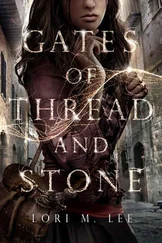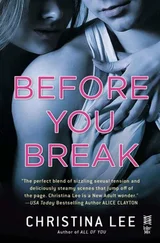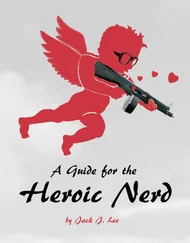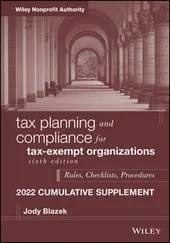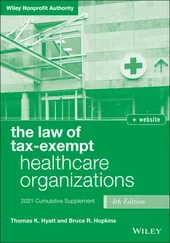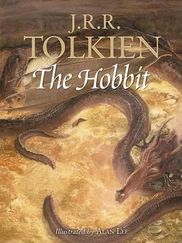1 ...6 7 8 10 11 12 ...34 The blink process is key to expertise and skill. Kahneman and Klein (2009) argue that it works best for individuals who have developed a deep understanding of a particular domain through experience and deliberate practice with feedback. Skill and expertise come to those who are willing to invest time and effort and learning (Ericsson, 2005). But for nonexperts, fast, intuitive thinking often leads to very bad judgments. Experts typically know when they don't know, but nonexperts think they know when they don't (Kahneman and Klein, 2009). “Subjective confidence is therefore an unreliable indication of the validity of intuitive judgments” (p. 524).
Research on human thinking has led to the identification of two distinct modes of cognition that operate in parallel: Type I (intuitive and automatic) and Type II (deliberate and analytic), summarized in Exhibit 1.1. Intuition is faster, requires less cognitive effort, and produces holistic judgments. It works best in the hands of experts dealing with fluid, messy problems, particularly if time is short. Analytic thinking is slower and requires more effort and conscious attention but can lead to superior judgment and decision in situations with well‐structured problems and high‐quality evidence (Evans and Stanovich, 2013; Hodgkinson and Sadler‐Smith, 2018; Kahneman, 2011; Kahneman and Klein, 2009; Luan, Reb, and Gigerenzer, 2019). Many businesses analyze big data to discover insights and patterns culled from mountains of data far beyond the capacity of any human mind.
Exhibit 1.1. Characteristics of Two Types of Human Thinking.
| Type I (Intuitive) |
Type II (Deliberate) |
| Fast Nonconscious Automatic Does not rely on working memory Requires less mental energy Relies on tacit, implicit knowledge |
Slow Conscious Intentional Requires use of working memory Requires more mental energy Relies on explicit knowledge |
In medicine, there is a growing emphasis on “evidence‐based medicine”—basing diagnosis and treatment on rules derived from research. Emergency room physicians who treat stroke victims, for example, have a detailed set of guidelines for diagnosis and treatment that are periodically updated as new research comes in. Some scholars have argued that the same idea can also work for managers (Barends and Rousseau, 2018; Martelli and Hayirli, 2018; Pfeffer and Sutton, 2006, 2011), though evidence for the benefits of evidence‐based management is still sketchy (Reay, Berta, and Kohn, 2017). Pfeffer and Sutton (2011) cite research showing that incentive pay for teachers is a bad idea but teams work better with stable membership as examples of findings that could help managers make better decisions. Tourish (2019) counters that managers hoping to learn from published research will find that most of it is trivial, unreadable, and disconnected from practice.
The bottom line is that Type I intuitive and Type II reflective thinking are both powerful and vital tools for managers and leaders. Each has advantages and disadvantages compared to the other. The key is knowing how and when to use each. Leaders go astray when their knowledge and judgment are inadequate to deal with the complex and elusive problems they face. The quality of their judgments depends on the information at hand, their mental maps, and how well they have learned to use them. Good maps align with the terrain and provide enough detail to keep you on course. If you're trying to find your way around Beijing, a map of Chicago won't help much. In the same way, different circumstances require different approaches.
Even with the right map, getting around will be slow and awkward if you have to stop and study at every intersection. The ultimate goal is fluid expertise, the sort of know‐how that lets you think on the fly and navigate organizations as easily as you drive on a familiar route. You can make decisions quickly and automatically because you know at a glance where you are and what you need to do next.
There is no shortcut to developing this kind of expertise. It takes effort, time, practice, and feedback. Some of the effort has to go into learning frames and the ideas behind them. Equally important is putting the ideas to use. Experience, one often hears, is the best teacher, but that is true only if one learns from it. McCall, Lombardo, and Morrison (1988, p. 122) found that a distinguishing quality among successful executives was that they were great learners, displaying an “extraordinary tenacity in extracting something worthwhile from their experience and in seeking experiences rich in opportunities for growth.”
Frames define the questions we ask and solutions we consider (Berger, 2014). John Dewey defined freedom as the power to choose among known alternatives. In The Art of War , Sun Tzu made a similar point 2,500 years ago: “Many options bring victory, few options bring defeat, no options at all spell disaster” (Sun, 2012). When managers don't see options, they make mistakes but often fail to understand why.
Take a simple question: “What is the sum of 5 plus 5?” The only right answer is “10.” Ask a different way, “What two numbers add up to ten?” Now the number of solutions is infinite (once you include fractions and negative numbers). The two questions differ in how they are framed. Albert Einstein once observed: “If I had a problem to solve and my whole life depended on the solution, I would spend the first fifty‐five minutes determining the question to ask, for once I know the proper question, I could solve the problem in five minutes” (Seelig, 2015, p. 19).
Asking the right question helps to break frames. Why do that? A news story from the summer of 2007 illustrates. Imagine yourself among a group of friends enjoying dinner on the patio of a Washington, D.C., home. An armed, hooded intruder suddenly appears and points a gun at the head of a 14‐year‐old guest. “Give me your money,” he says, “or I'll start shooting.” If you're at that table, what do you do? You could faint. Or freeze. You could try a heroic frontal attack. You might try to run. Or you could try to break the frame and redefine the situation by asking an unexpected question. That's exactly what Cristina “Cha Cha” Rowan did.
“We were just finishing dinner,” [she] told the man. “Why don't you have a glass of wine with us?”
The intruder had a sip of their Chateau Malescot St‐Exupéry and said, “Damn, that's good wine.”
The girl's father … told the intruder to take the whole glass, and Rowan offered him the bottle.
The robber, with his hood down, took another sip and a bite of Camembert cheese. He put the gun in his sweatpants …
“I think I may have come to the wrong house,” the intruder said before apologizing. “Can I get a hug?”
Rowan … stood up and wrapped her arms around the would‐be robber. The other guests followed.
“Can we have a group hug?” the man asked. The five adults complied.
The man walked away a few moments later with a filled crystal wine glass, but nothing was stolen, and no one was hurt. Police were called to the scene and found the empty wine glass unbroken on the ground in an alley behind the house. (Hagey, 2007)
In one stroke, Cha Cha Rowan recast the situation from a robbery—“we might all be killed”—to a social occasion—“let's offer our guest some wine and include him in our party.” Like her, artistic managers frame and reframe experience fluidly, sometimes with extraordinary results. A critic once commented to Cézanne, “That doesn't look anything like a sunset.” Pondering his painting, Cézanne responded, “Then you don't see sunsets the way I do.” The critic tacitly assumed that his was the correct way to see sunsets. Like Cézanne and Rowan, leaders have to find ways of asking the right question to shift points of view when needed. This is not easy, which is why “most of us passively accept decision problems as they are framed, and therefore rarely have an opportunity to discover the extent to which our preferences are frame‐bound rather than reality‐bound ” (Kahneman, 2011, p. 367).
Читать дальше
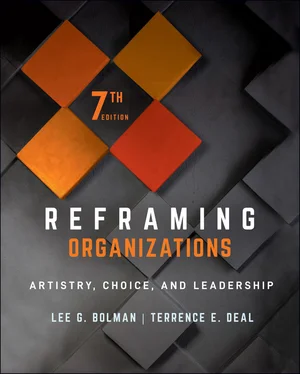
![Lee Jungmin - Хвала Орку 1-128 [некоммерческий перевод с корейского]](/books/33159/lee-jungmin-hvala-orku-1-thumb.webp)
